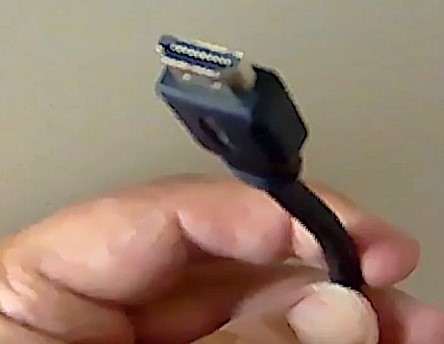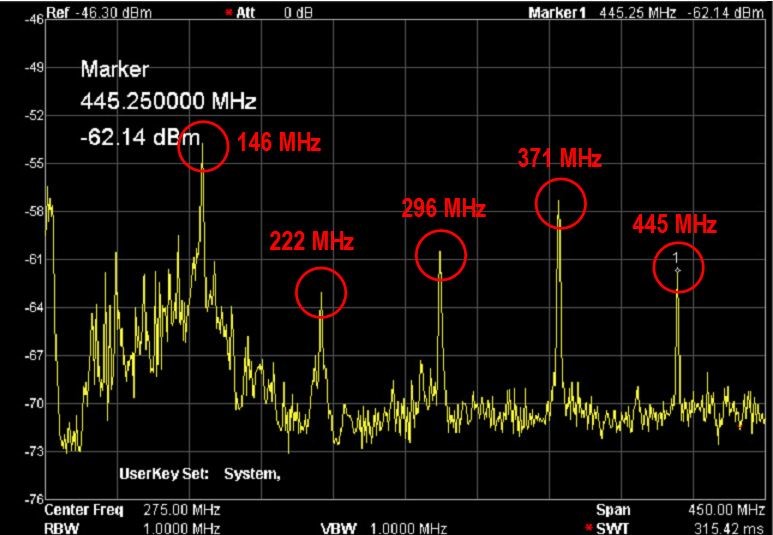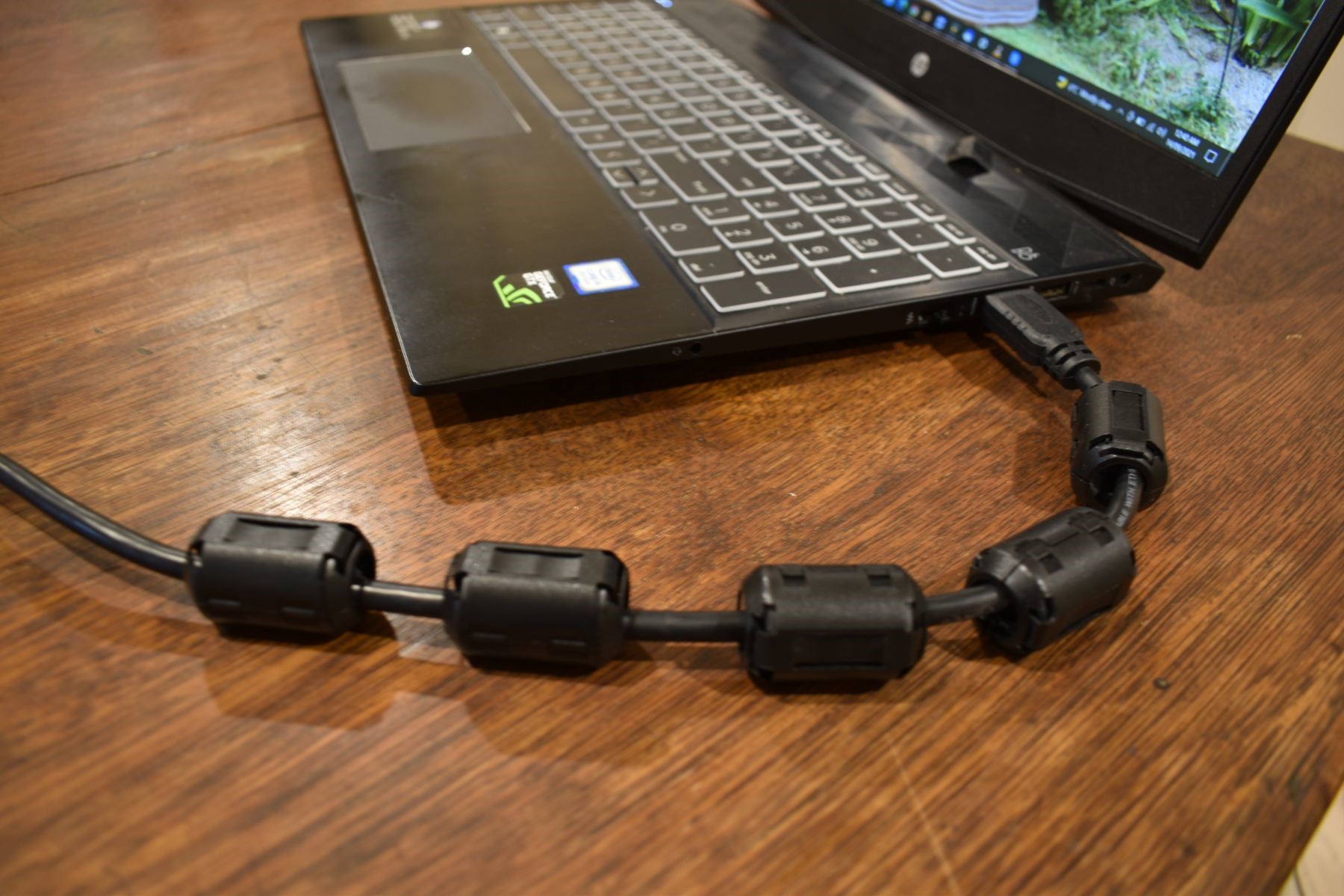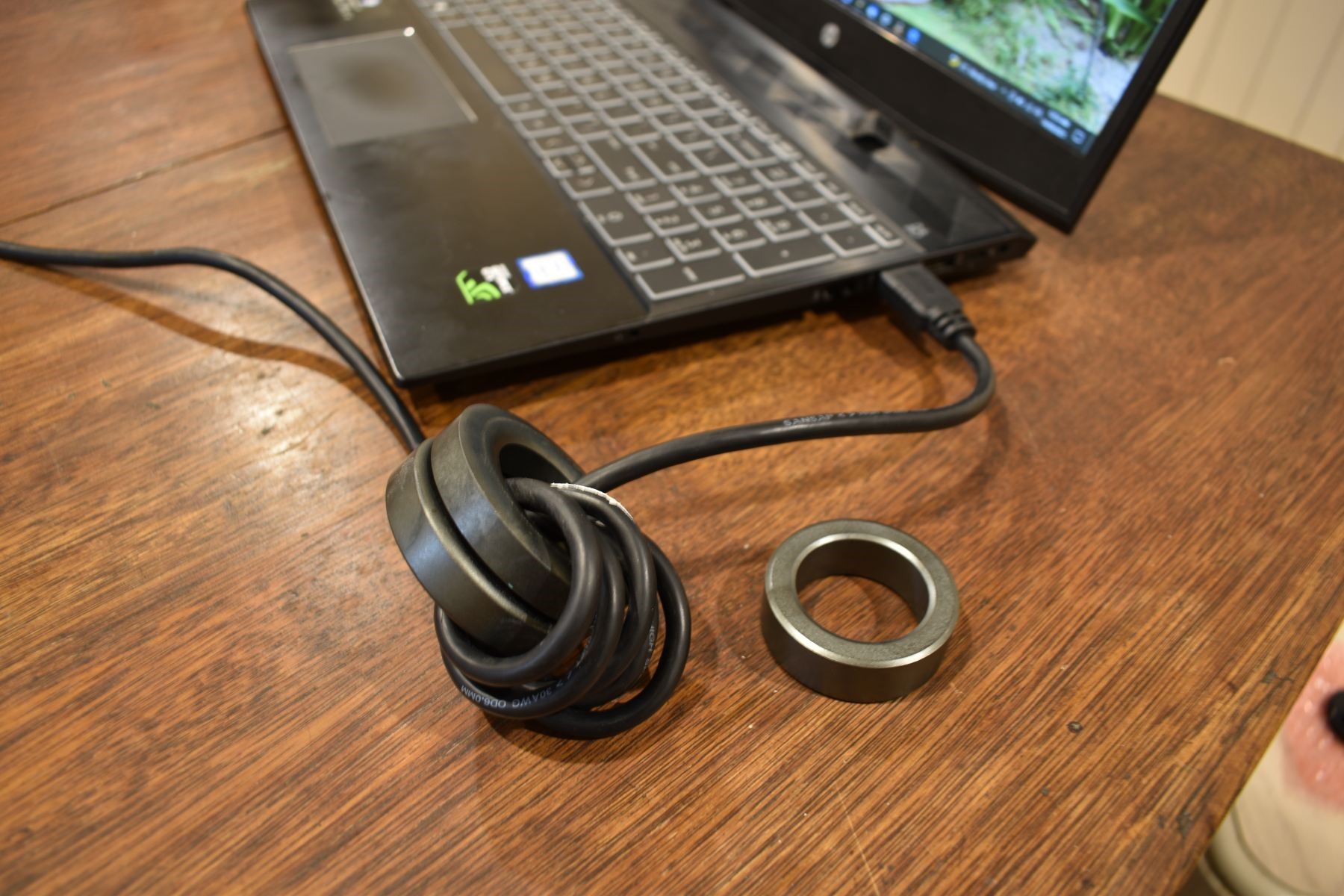HDMI – HIGHLY DEPENDABLE MOBILE INTERFERENCE
QRM from your PC?
There are probably millions of screens around the world which use HDMI video connections.

HDMI is supposed to stand for ‘High Definition Multimedia Interface’ but in Amateur Radio circles it can sometimes cause annoying interference problems. The HDMI standard is quite complex, with several variations, but for the most part we regard it as a straightforward method of getting sound and video to a screen and speaker. Inside the HDMI cable there are 19 wires, terminating on connections a mere 0.5mm apart. The high-quality video and audio comes from wide bandwidth and high data rates into VHF frequencies. Generally, the shielding is effective at preventing these signals from radiating as interference, but harmonics can still bleed through.
HDMI interference will vary with the line frequency and the monitor’s resolution settings. At QRM Guru we received a report about a shack PC display which was creating noise in the 2 Metre band. The noise was also evident at 445.5 MHz, well within our 70cm Amateur television allocation. We decided to check this out and see what it would take to reduce or eliminate this noise entirely.
First, we set up a laptop, a monitor, and a HDMI cable. We performed a spectrum sweep to around 500MHz and had a look around. This image shows the ‘before’ and ‘after’ of hooking up the offending cable.

The ‘Before’ image (left) shows the unplugged ends of the HDMI cable. On the analyser, there were some FM broadcast stations at the low end, but the band was mostly clear. When the external monitor was connected, multiple spikes appeared on the screen. Here’s a close-up.

The HDMI noise was behaving as a comb generator, with interference spikes appearing every 75 MHz. The first and last spikes appeared in the Australian amateur allocations and the 222 MHz spike was clearly within the international 1.25 Metre Amateur Band.
In practical terms the interfering signals were not strong. A better-quality screened cable could help or selecting a different monitor frequency to move the interference away from amateur bands would be another possible option. Still, the interference was evident and an attempt to reduce or eliminate was warranted.
Having replicated this QRM, the question was, ‘what will it take to eliminate this interference?’
We generally advocate the use of ferrites to suppress such unwanted RF radiation. Generally, minimising or eliminating unwanted RFI can be achieved with ferrites.
More specialised VHF/UHF rated ferrites would be a better option, but we performed the tests with the more commonly available Type 43 ferrites. These are most useful at HF and lower VHF frequencies, but still exhibit useful RF absorption characteristics at higher frequencies.
We began with a single small ferrite clamp. Sadly, this hardly made any detectable difference. Next, we moved to larger clamps, and kept adding more. This was better. By the time five clamps were on the cable the QRM intensity had halved.

It was time to bring in the big guns and try out some ferrite rings. These are a lot more effective. The additional mass of the larger rings adds considerable absorption, but more importantly, it lets us loop multiple turns of cable through the ring. There is a multiplying effect here as two turns is four times as effective as a single pass. Four turns yield approximately 16 times the attenuation. By the time four turns of the HDMI cable has passed through the 50mm ring, the interference spikes were still present, but getting close to the background noise.

We ramped it up even further to find out what it would take to suppress all the discernable noise. In the end it took two 60mm rings, stacked, with four turns of cable, located close to the laptop. With this in place, the band was quiet, the noise source successfully eliminated.
Conclusions
The significant take-away from this experiment is that the desired effect may not be achieved with just one or two ferrite clamps. But don’t give up! It is worthwhile ramping up the ante until you achieve the desired outcome.
These experiments were conducted with a standard Kill Kit from the QRM Guru website.
We are surrounded by noisy appliances that will try to test our resolve. A modern necessity of Amateur Radio is to get that noise floor down as low as possible.
26 July 2022
